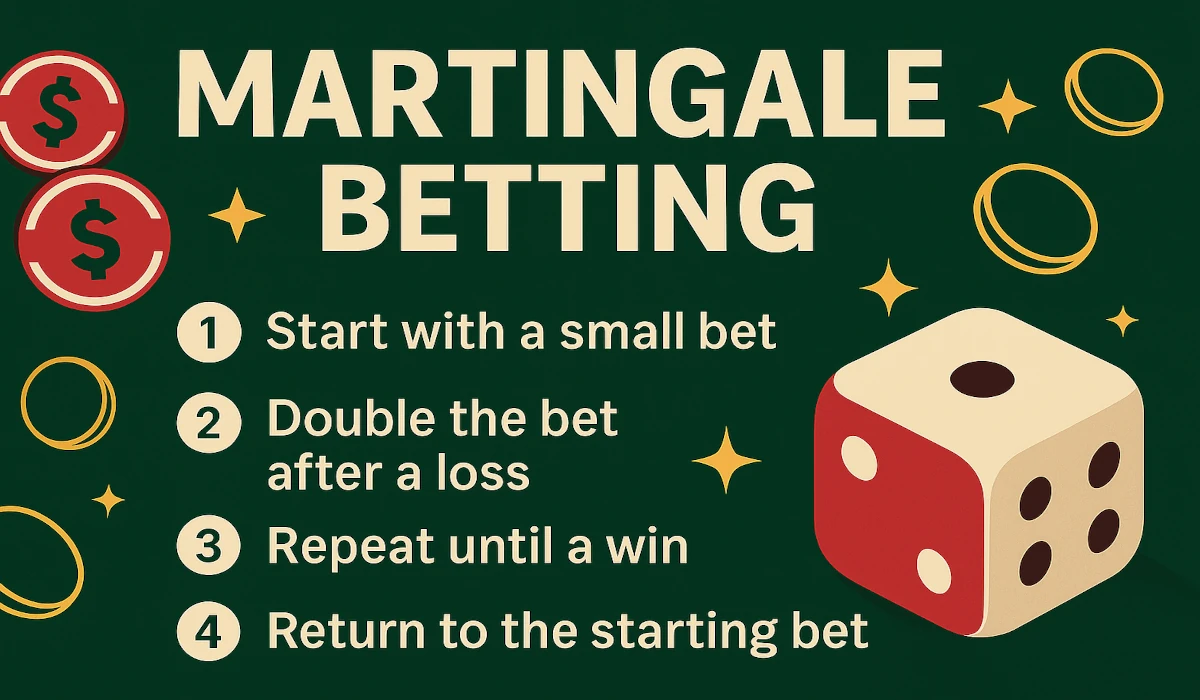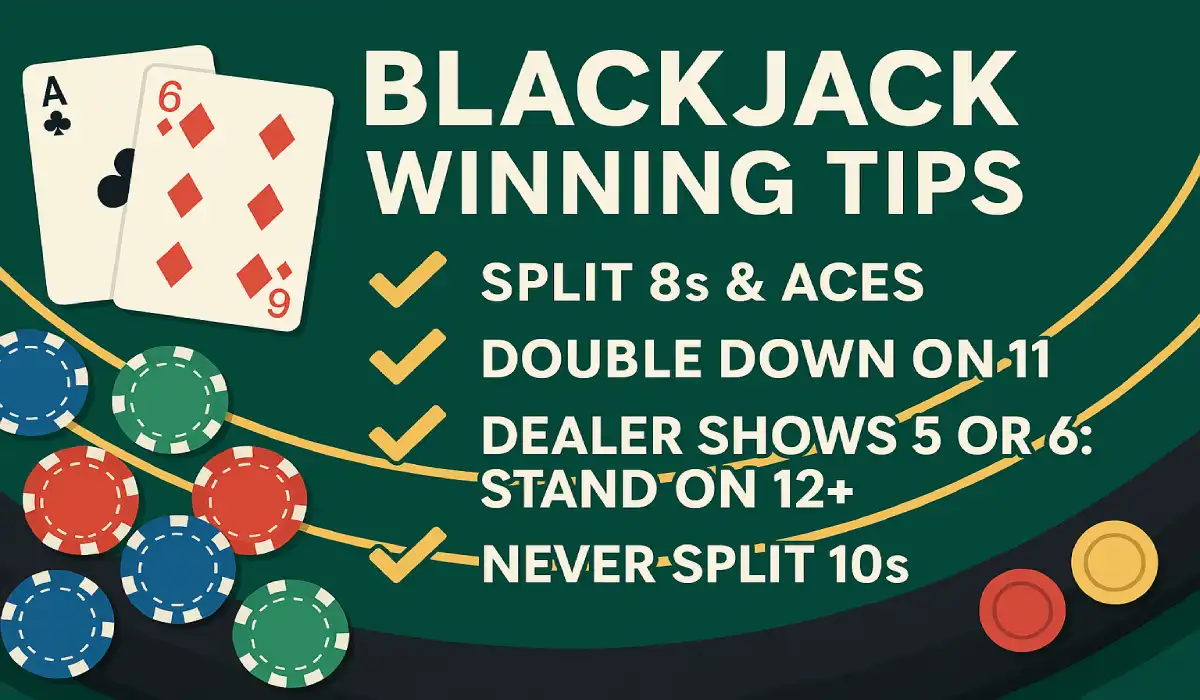
05 May 2025
10 Popular Poker Types of Games and Variants Explained
🗝️ Key Takeaways
- Grasping the regulations and the hierarchy of hands is crucial for success in any poker variant, from Texas Hold'em to lesser-known games like Badugi.
- Each poker game type, whether community card, draw, or stud, presents different strategies and skill levels. These distinctions lure different player types and levels of experience.
- Betting structures such as fixed-limit, pot-limit and no-limit determine the nature of the game. Pick the one that you feel best suits your comfort level and expertise in controlling your bankroll.
- Mixed games like HORSE challenge players to quickly adapt to changing formats, making them a favorite among advanced and professional players seeking a comprehensive test of skill.
- Begin with easier games such as Five-Card Draw or Texas Hold’em. They provide you with a great base before you get into the deeper waters of more specialized poker games.
- Poker in America is moving very quickly right now. Online and mobile platforms provide casual and more committed players a convenient way to access more game types anytime, anywhere, nationwide.
Poker is a widely enjoyed card game that features a variety of game types, providing players with countless opportunities to experience the excitement. These poker types of games each feature their own rule structures, betting rounds, and unique paths to victory.
In the United States, four main poker types dominate the scene: Texas Hold’em, Omaha, Seven-Card Stud, and Draw Poker. Each of these poker types of games has specific rules that define how players bet, form winning hands, and balance skill with luck.
Texas Hold’em is the most well-known and commonly played version found in nearly every card room and tournament across Las Vegas and the country. Omaha follows closely behind, especially popular at both live events and online poker platforms.
Stud and Draw games, while less commonly seen in modern casinos, still hold a place in home games and select card rooms. To find the best fit for your playing style, it's helpful to explore the key differences between these poker types and understand what makes each one distinct.
♠️ What Makes Poker, Poker?
Here’s why poker is unique from other card games. It’s brilliant interplay of chance, ability and bluffing brings out the uncertainty in each opponent, constantly provoking full focus at the table. Each poker variant starts with a regular 52-card deck. The amount of cards that are actually in play can vary wildly based on what kind of game you’re playing.
At its most fundamental level, poker is all about crafting the best five-card hand. Other times, you’re playing against your own cards. Sometimes, you combine them with community cards, or you draw new ones to improve your hand.
💰 The Goal: Winning the Pot
The ultimate objective in poker is straightforward—win the pot. The goal of poker is winning the pot. The pot is the stack of chips or money that players wager in a round. Filling the pot with the highest valued hand at the showdown is essential.
Players have the ability to shove their adversaries out of the hand with well-timed bluffs. In Texas Hold’em, you’re dealt two cards to start. Next, you will use a maximum of five community cards to make the best five-card hand. In draw poker, you exchange cards with the dealer after your first hand. This mechanic creates another layer of strategy as you try to increase your chances.
🌍 Universal Hand Rankings Matter
Regardless of the variant, hand rankings are at the core of poker. Whatever the stakes, whether it’s a common pair or a coveted royal flush, the universal pecking order is the same for everyone. The kicker—a side card—frequently breaks ties, as in the case of four-of-a-kind.
To learn more about this, check out our guide to poker hand rankings.
🎯 Betting Rounds: The Core Action
This is where the real action of poker occurs. Betting rounds let players raise, call, fold, or check—each decision shaped by the cards, stakes, and reading of opponents. With the introduction of community cards, the odds shift from round to round.
In other games such as seven-card stud, some cards are dealt face-up. This creates a thrilling dimension, as players are able to “read” a portion of their opponents' hands.
🎲 Why Rulesets Create Variety
Poker branches into many types because rules shift. How many cards you get, when you bet, or whether you use community cards can all vary. These adjustments turn that one game into a multi-game family.
Each one features its own distinctive pace, strategy, and fan culture.
🧭 Explore Popular Poker Variants
Poker is not one game but many. As such, it’s a fascinating collection of games, all with distinct rules, histories, and cultures. Whether in the United States or indeed anywhere in the world, poker tables are filled with a variety of these distinct formats.
No matter whether you’re seated at a crowded card room in San Francisco or spread out at your kitchen table, the variant you play makes all the difference. It sets the rhythm, hones the skills needed, and most importantly, sets the tone for how enjoyable it is. Explore more of the most popular poker variants today.
We’ll point out each little thing that makes them different from one another, so you can understand what distinguishes one from the other.
1. Texas Hold'em: America's Favorite Game
No other poker game has ever achieved the cultural touchstone status of Texas Hold’em. Walk into almost any casino card room in the United States, and you’ll see tables full of Hold’em players. What makes this variant so appealing to millions of players?
One, the format is user friendly. Each player gets two private cards (hole cards), and five community cards are shown in the center for all to use. Players use these community cards to create the best five-card hand they can from any combination of their own and the community cards.
The betting rounds—pre-flop, flop, turn and river—provide a cadence to Hold’em that is uniquely satisfying and punishes both impatience and cowardice. The game is simple to pick up, but difficult to perfect.
The world’s top professionals will mesmerize you with the rich layers of strategy, everything from identifying betting patterns to utilizing your chip stack. This is the primary game used in the World Series of Poker Main Event.
This prominence is perhaps the biggest reason for its visibility and popularity in the American poker culture. If you’re a complete beginner, it’s where you are most likely to get your feet wet. If you’re already playing, there’s a lifetime of strategy to master.

2. Omaha High: Four Cards, Big Action
Omaha High, or just plain Omaha, has a great deal in common with Texas Hold’em. Players get double the hole cards, with four instead of two. Here’s the kicker – you must play exactly two from your hand and exactly three from a possible five community cards.
That simple detail alters the game’s atmosphere in profound ways. Since players have four cards to start with, it’s more likely that stronger hands are available, and pots can escalate quickly. Omaha is famous for having bigger swings and more action than Hold’em, which is an attractive feature to players who enjoy high-paced games.
In the American card rooms, Omaha flourishes in cash games and tournament formats equally. It’s especially popular in lively gaming centers such as Las Vegas and Atlantic City. Omaha takes it up a notch with more cards and special rules regarding hand composition.
When it is, it’s immensely rewarding for players who love the action of big hands to come often, and an electric table dynamic.
3. Omaha Hi-Lo: Mastering Split Pots
Omaha Hi-Lo, referred to as Omaha Eight or Better, takes the Omaha format to a whole new level of excitement. The pot is divided between the best hand and the lowest qualifying hand.
To qualify for the low hand, it usually has to consist of five cards ranked eight or below—each of a different rank and suit. This split-pot structure creates some very different strategy pitfalls to avoid.
Players must balance the risk versus reward of shooting for the high, the low or both. This strategy is called “scooping” the pot. Omaha Hi-Lo doesn’t get the same play cash at the smaller stakes, but it booms online and in bigger tournaments across the US.
Players are obsessed with it for the additional layers of math needed to dominate both sides of the table.
4. Seven-Card Stud: The Classic Skill Test
Long before Hold’em stole the show, Seven-Card Stud was the headliner in nearly all American cardrooms. In Stud, there are no shared cards at all. Players are dealt a mix of up-facing and down-facing cards over several betting rounds.
At the conclusion of play, all players have seven cards in front of them—three down and four up. Similar to Texas Hold’em, the highest five-card hand takes the pot. Stud requires a meticulous eye for detail.
Since so many cards are face-up, players can see what’s been played and what’s still available. The action may be less frenetic, but the strategic complexity is immense. Some old-school players even consider Stud the ultimate test of poker prowess, where memory and math are the most important factors.
5. Five-Card Draw: Simple, Pure Poker Fun
Five-Card Draw is the classic version most Americans learn at the kitchen table. Each player is dealt five personal cards. Players begin with a first round of betting.
Subsequently, they all have the opportunity to discard cards and draw new ones to enhance their hands, followed by another round of betting. The rules are simple and the action is fast, making it a great introduction for beginners.
Of the 15 popular poker variants we covered, Five-Card Draw is definitely one of the most accessible. It has become less prevalent in casinos today, but Five-Card Draw is still a staple of home games and informal clubs.
6. Razz: Winning By Losing Low
Razz turns the premise of Seven-Card Stud on its head. In this game, it’s the worst low hand that takes the pot. Straights and flushes don’t hurt you here, and aces are always low.
In Stud, you get a combination of up cards and down cards. This architecture makes for a lot of public data, but it demands exceptional memorization capabilities. Razz is widely popular in mixed games, where players rotate formats in a single session.
The difficulty lies in the attempt to dodge pairs and high cards, all the while keeping an eye on what others have revealed. It’s weird in the best possible way and attracts a certain type of player who enjoys the mental contest of defying more traditional poker wisdom.
7. 2-7 Triple Draw: Challenging Lowball Play
In 2-7 Triple Draw, or Deuce-to-Seven, your goal is to have the worst hand. Be mindful of the fact that straights and flushes are bad, and aces are always high! Players have three opportunities to draw new cards, leading to a ton of strategic choices each hand.
This format is a favorite in high-stakes circles and among pros that love the math and nerdy aspect of poker. It’s not so much about bluffing as it is about tactical card drawing and interpreting your opponents’ draws.
Ideal for players looking for a challenge beyond the typical high-hand games, Triple Draw is a true test.
8. Short Deck Hold'em: A Modern Twist
Short Deck Hold’em, or 6+ Hold’em, is another newer variant that’s rapidly taking over high-stakes cash games. It’s particularly popular in Asia and entering US card rooms more and more.
The twist is the deck: all cards below six are removed, leaving 36 cards. That change increases the action—stronger hands at the start and a different drawing math.
Flushes beat full houses, and the probabilities for hitting strong hands are altered to favor fast calculation. Players who enjoy the strategic elements of Hold’em but prefer a quicker, more action-packed experience are flocking to Short Deck.
9. Badugi: Unique Lowball Hand Format
In fact, Badugi is very different from every other poker variant. Players compete for the lowest four-card hand, with each card being a different suit and rank. Duplicate suits or ranks reduce the strength of your hand, so the goal is something like 4♣ 3♦ 2♥ A♠.
While Badugi isn’t as common in American casinos, it can be played online and in mixed-game tournaments at many cardrooms. The rules create a great tension.
While drawing the perfect hand is a rarity, each betting round gives you new choices on what to hold or throw away. For players looking for something different, Badugi fits the bill.
10. Chinese Poker: Strategic Hand Setting
Chinese Poker gives each player 13 cards, and the challenge is to set them into three hands: two five-card hands (middle and back) and one three-card hand (front). Each hand goes against the same numbered hand of the other players.
It’s not a game of bluffing, but more about formulating and arranging strategic hands. Choosing how to split your cards for the best chance to win each round requires logic and a knack for probability.
Chinese Poker has exploded in popularity. Players are crazy about it, particularly in the underground scene, and poker professionals adore it as a cleansing palate from conventional variants.
🚀 Understand Key Game Categories
Poker is a game of skill vs luck. The unique format of the game helps shape what players will be thinking, planning, and doing when they sit down to play. The three primary categories—community card, draw, and stud games—all have their own rules, rhythms, and layers.
Understanding these categories can help gamers point players toward more productive moves. It allows them to develop new strategies and understand the flow of play with every hand dealt. Let’s take a closer look at each category and understand what makes them unique.
🌟 Community Card Games Explained (Hold'em/Omaha)
Community card games like Texas Hold’em and Omaha are the most common types played in North America. Each player is dealt private cards—two in Hold’em, four in Omaha.
Then, five community cards are dealt face-up in the center. These community cards are available to all players. Players use their hole cards together with the community cards to form the best possible five-card hand.
Betting occurs after every round as more community cards are dealt. This format demands excellent recall, social interaction, and a knack for calculating probabilities as the game develops.
⚡ Draw Poker Strategy Insights (5-Card/2-7)
Draw poker games like traditional Five-Card Draw and 2-7 Lowball center around concealed information. Players begin with a complete hand, all cards down.
After the initial betting round, they have the opportunity to exchange some of their cards for new cards from the deck in hopes of improving their hand. The hidden information creates a mental game—trying to determine what other players have, attempting to bluff them and reading tells through opponents’ small actions become crucial.
💡 Stud Poker Skill Elements (7-Card/Razz)
Players begin with an initial hand of cards, usually comprising a mix of face-up and face-down cards, with more cards being dealt over several rounds. Each player is given seven cards, but only the best five are played.
The bigger the table gets with open cards, the more the ability to read the table and calculate outcomes into focus. Since betting occurs after each card, the action comes out dynamic, and memory for cards that have been seen provides great dividends.
🏆 Mixed Games: The Ultimate Poker Test
Mixed games offer the ultimate challenge to those who would take up the title of poker player. Unlike single-variant games, mixed games are known as multi-game formats and cycle through several poker variants within a single session. Playing mixed is not just a matter of knowing the rules.
It forces you to adjust your mindset on the fly and be nimble in real time. This is most commonly exemplified in the HORSE format. You see it in online games and card rooms everywhere, from San Francisco to Las Vegas. This setup checks if a player can keep up with the pace, grasp all the rules, and stay sharp as the game shifts every orbit.
💥 What is HORSE Poker?
HORSE stands for five poker games: Texas hold 'em, Omaha high-low, razz, seven-card stud, and seven-card stud eight-or-better. With each round, the game rotates to a new variant, and the dealer button rotates with it. One minute, you’re in a fast-paced, high-stakes game of hold ’em.
Then in the very next hand you’re playing razz, where the lowest possible five-card hand wins! There’s Omaha high-low, where pots are divided between the best high hand and best low hand. Mixed games frequently feature five-card draw and 2-7 triple draw.
Often, they include specialty games like Badugi, Badeucy, and Badacey, each introducing colorful new rules that add even more excitement to the mix.
🔥 Why Pros Love Mixed Games
For seasoned pros, mixed games are a dream come true. You can’t just be the best at one variety. Pros need to demonstrate strong play in all variants—high, low, split-pot, draw and stud games.
This depth prevents the games from becoming gimmicky, whacky or unfair. It makes the game more fair to all who are willing to do the work to hone their craft.
🔄 Challenges of Switching Styles Fast
Going back and forth between styles is what mixed games are all about. Players have to get accustomed to new rules, hand values, and betting structures every few hands. In limit games like stud or razz, expect a lot of small pots.
No limit hold 'em is the game where the money really gets flying! A player must have the strategy for each variant line up mint fresh, prepared to change tack on a dime without getting distracted.
This nonstop alteration to the flow of the game makes mental endurance and fast calculus the watchwords of the day.
⚖️ Pros and Cons of Each Game
Understanding the strengths and drawbacks of each poker variant can help you choose the right one for your skill level, playing style, and goals. Here’s a breakdown of the most popular poker games and what to expect from each.
1. Texas Hold’em
- Pros:
- Simple to learn, widely accessible.
- Huge player base online and offline.
- Strong community and learning resources.
- Ideal for both casual and tournament play.
- Cons:
- Highly competitive due to its popularity.
- Strategic depth means a steep learning curve to master.
- Predictable for advanced players without variation.
2. Omaha Hi
- Pros:
- Bigger pots and more action than Texas Hold’em.
- Stronger hands lead to more dramatic showdowns.
- Great for players who enjoy math-heavy decision-making.
- Cons:
- Four hole cards can be overwhelming for beginners.
- Requires careful hand selection to avoid trap hands.
- More variance due to stronger average hands.
3. Omaha Hi-Lo (8 or Better)
- Pros:
- Opportunity to split the pot and scoop both halves.
- Deep strategic gameplay rewarding skilled players.
- Lower variance when you consistently win half the pot.
- Cons:
-
- Complex rules and split-pot strategy can confuse newcomers.
- Chasing low hands can be risky if no qualifier emerges.
- Slower pace compared to other variants.
4. Seven-Card Stud
- Pros:
- No community cards—greater emphasis on memory and reads.
- Favors skill over luck with more visible cards in play.
- Great for traditionalists and live cash game players.
- Cons:
- Fewer online games available.
- Slower gameplay can be less appealing to modern players.
- Requires strong focus to track all visible cards.
5. Five-Card Draw
- Pros:
- Very beginner-friendly.
- Classic home game with simple rules.
- Encourages bluffing and reading opponents.
- Cons:
- Lacks strategic complexity for advanced players.
- Rare in online and casino settings.
- Fewer betting rounds reduce tactical depth.
6. Razz
- Pros:
- A unique lowball game for players who like contrarian strategies.
- Encourages a different mindset from high-hand games.
- Ideal for mixed game specialists.
- Cons:
- Can be confusing for those unfamiliar with low-hand rankings.
- Less popular, with fewer tables available.
- Difficult to follow without strong fundamentals.
7. Badugi
- Pros:
- Unique hand rankings—great for players seeking novelty.
- Bluffing and reading opponents are vital.
- Excellent change of pace for draw game fans.
- Cons:
- Small player pool, especially online.
- Not intuitive for new players.
- Requires a mental reset from traditional hand rankings.
8. Triple Draw Lowball (2-7)
- Pros:
- Strategic depth in multiple drawing rounds.
- Lowball rules offer a refreshing challenge.
- Popular in mixed game formats.
- Cons:
- Harder to find as a standalone game.
- Requires patience and draw discipline.
- Complex for beginners due to non-standard hand values.
9. HORSE
- Pros:
- It mixes five games (Hold’em, Omaha Hi-Lo, Razz, Stud, Stud Eight).
- Great for testing all-around poker skills.
- Popular in high-stakes and pro-level formats.
- Cons:
- Demanding—requires knowledge of multiple formats.
- Intimidating for casual or newer players.
- Mistakes in one game can cost a full rotation of chips.
10. Chinese Poker
- Pros:
- Fast-paced and social.
- Great for casual play or small stakes.
- Strong focus on hand arrangement and creativity.
- Cons:
- Mostly luck-based; less strategy compared to other games.
- Scoring systems can be confusing.
- Limited availability in formal card rooms.
🌟 Popularity Ratings of Games
Poker’s global appeal has led to the rise and fall of various game variants. While some dominate both online and offline tables, others maintain niche followings or are primarily played in home games or mixed formats. Below is a general popularity rating based on player activity, tournament frequency, online availability, and community interest.
1. Texas Hold’em — ★★★★★ (5/5)
The undisputed king of poker variants. Texas Hold’em is the most played, televised, and promoted form of poker worldwide. Found in nearly every casino, online room, and tournament series, it’s the gold standard for both beginners and pros.
2. Omaha Hi — ★★★★☆ (4/5)
Rapidly rising in popularity, especially in online cash games. Omaha attracts players with its action-packed hands and higher variance. It’s the second-most common game in major poker rooms and international tournaments.
3. Omaha Hi-Lo — ★★★☆☆ (3.5/5)
This split-pot variant has a solid fan base, particularly among experienced and older players. It appears frequently in mixed games and has growing traction online, but its complexity keeps it from overtaking regular Omaha in casual circles.
4. Seven-Card Stud — ★★★☆☆ (3/5)
Once the most played poker game in America before Hold’em took over. Still popular among traditionalists and older players, but limited mostly to home games and select casino rooms today.
5. Five-Card Draw — ★★☆☆☆ (2.5/5)
The classic “old school” poker game that many people learned first. Its simplicity remains charming, but it’s rare to find in casinos or online outside of specialty rooms and casual play.
6. HORSE — ★★☆☆☆ (2/5)
A respected mixed game format in high-stakes circles and pro tournaments like the WSOP. However, it’s largely inaccessible for most casual players due to its complexity and the need to master multiple formats.
7. Razz — ★★☆☆☆ (2/5)
A love-it-or-hate-it game that shines mostly in mixed rotations like HORSE. Its low-hand goal confuses newcomers, keeping its appeal niche and mostly within the pro community.
8. Triple Draw Lowball (2-7) — ★★☆☆☆ (2/5)
Very strategic and loved by seasoned grinders, but still underplayed in mainstream circles. Limited table availability makes it harder for casual players to pick up.
9. Badugi — ★☆☆☆☆ (1.5/5)
Badugi’s unique rules and small community keep it on the fringes of the poker world. You'll rarely find it outside of mixed games or specialty apps, but it's a favorite among those seeking something fresh.
10. Chinese Poker — ★☆☆☆☆ (1/5)
Enjoyed mostly in casual or social circles. It's fast and fun but far less strategic and not common in tournament or serious cash game environments. Still, it has loyal fans who enjoy its laid-back format.
🚀 How Betting Structures Impact Play
Betting structures create the foundation on which all play in poker exists. Each style dictates the tempo, level of risk, and degree of strategy involved at the table across major poker types—fixed-limit, pot-limit, and no-limit—how players bet, raise, and respond changes the math and mindset.
🎯 Fixed-Limit: Structured Betting Action
In fixed-limit games, such as Limit Hold’em, there are fixed bet and raise sizes. This breeds smaller pots and decisions that are mathematical as opposed to bluff. So in a $5/$10 limit game, we start with $5 bets on the first round. A $5 raise is now $10 in the pot.
Players are able to “call two bets cold.” That means they can call both a bet and a raise simultaneously, something that often occurs after an early raise. With a set minimum bet/raise and no such thing as a multi-bet raise, the really big swings just don’t happen.
Even a 3-bet has to take the prescribed step. As a result, a higher number of players see later cards, particularly with drawing hands, as the risk remains calculable.
🌱 Pot-Limit: Growing the Pot Strategically
Pot-Limit games, such as Pot-Limit Omaha, allow players to only bet up to the current size of the pot. This presents the opportunity for strategic pot building or massive bluffs. The betting is initiated with blinds, and action starts with the player to the left of the blinds, so position becomes very important.
Players can still be aggressive with their raises through the option of re-raising, but only as much as what’s currently in the pot. The game begins to heavily favor a player’s ability to size their bets and read their opponents when pots quickly get larger due to multiple raises.
💣 No-Limit: The Ultimate Test of Nerves
In no-limit games, like No-Limit Texas Hold’em, any player can raise the stakes by betting all their chips at any moment. The big blind gets the “option” to raise if no one else has. Heads-up, blinds work differently: the big blind acts last and can check if no raise comes.
With no cap, large re-raises and all-in pushes put the squeeze on opponents and induce difficult decisions. Complicated scenarios can occur, such as putting up a kill blind when you are already in for a blind.
In this instance, betting structure forces players to juggle guts and logic every round.
🔍 Find Your Perfect Poker Match
Choosing the right poker game is not only about knowing the rules but understanding how different options fit your style, goals, and group. Each variation, from Texas Hold’em to Omaha to Seven Card Stud, offers its own distinct blend of skill, luck, and social engagement. While exploring these games, it’s also essential to understand the combinations in poker that determine the outcome of each hand. Discovering your perfect poker match takes a bit of self-knowledge and experimentation.
🌟 Match Game to Your Personality
For others, the less you do, the better. They are excited by high-action games, such as Texas Hold’em, where shared community cards build shared tension and generate massive swings. Others prefer the calm rhythm of stud or draw poker.
In these games, the cards you are dealt and your ability to read the table are equally important. If you enjoy quirky spins, games like "deuces wild" or "razz" layer in new rules, shifting the regular poker experience into something fresh. Table size can be an issue too; small tables are very intimate, but larger tables become chaotic and loud.
💥 Assess Learning Curve vs Complexity
Consider Learning Curve vs Complexity. Not every poker game is beginner-friendly. Texas Hold'em, made famous by the World Series of Poker, is simple to grasp but tough to perfect, which makes it an ideal starting point.
Games such as Omaha or stud are more time-consuming to learn, having additional betting rounds and more cards in play to keep track of. If your goal is fast-paced enjoyment, choose a less complex rule set. If you’re looking for a more intense mental workout, go for the ones with greater complexity.
🎡 Start Simple, Then Branch Out
It's smart to begin with the traditional variants, then expand your repertoire. Read more in our guide on how to play poker. For every variant, experiment with different betting structures—limit, no-limit, pot-limit—as these drastically alter the risk/reward calculus.
🃏 Casual Fun or Serious Strategy?
Some games rely more on luck, others more on skill. If you’re looking for a casual, fun experience, go for the versions that are more luck-based. If a battle of wits is more your style, games that focus on reading your opponents and calculating odds are the way to go.
🌍 Poker's Evolution: From Saloons to Online
Poker’s story, defined by culture and technology alike, is a testament to how games can evolve while retaining what makes them highly enjoyable. The fundamental rules and ethos of poker are alive and well. How players approached the game changed with every new age.
Consequently, today’s poker tables, both physical and online, hold vivid remembrances of the game’s formative years in the United States. They are a testament to the encroachment of modern life.
📜 How History Shaped Today's Games
Poker has a rich history that dates back over 500 years. It has clear links to the Persian game “As Nas,” which has origins in the 16th century. In these saloons, along the frontier, and elsewhere in 19th century America, poker started to come into its own.
People played it in saloons, on riverboats, and in miners’ camps. These environments allowed poker to grow quickly, as players reworked and tinkered with rules to best suit their circumstances. By 1850, five-card draw had become the most popular game in the land.
Before long, new and exciting variations like stud poker and Texas Hold’em started coming on the scene. Local variations quickly became the order of the day. They led to most of the poker formats we enjoy in tournaments and home games today. Texas Hold’em, for instance, became the most popular variant in low-stakes and high-stakes rooms alike.
🌐 Online Poker's Transformative Effect
It was all turned upside down by the arrival of online poker. Now players can enter games with the click of a button and play against opponents from all over the world. This change created opportunities for amateurs and pros alike, allowing everyone to learn, hone their craft, and improve their game.
Online rooms have the variety—Hold’em, Omaha, stud, and others—each available in various speeds and stakes. The digital format did wonders for the overall poker experience. AI-based tools allow players to improve their game strategies, which makes poker less intimidating and more data-driven.
📱 Mobile Play and Game Accessibility
Poker’s accessibility has massively expanded by mobile play, with games now available at everyone’s fingertips. This allows players to get into a quick game on their lunch break or enter a tournament from their couch.
Mobile play introduces all the same options as online game rooms, with immersive action, intuitive interfaces, and safe banking – all in the palm of your hand. For some, this convenience and availability has helped poker to become a staple of everyday life.
The table's aesthetics will be different, but some things never change. Players continue to return for the ideal combination of chance, skill, and social entertainment—be it in a casino, in their living room, or on mobile.
🕵️♂️ Debunking Common Poker Game Myths
Luck plays a major role in poker, and while that may be true to an extent, it’s a gross oversimplification of the game. Skill and smart play shape most wins in poker, whether at a table in San Francisco or online from home. Misconceptions about poker prevent new players from joining the game and sometimes even mystify those who are more seasoned.
Let’s debunk a few of these notions to reveal the truth behind what’s going on behind poker’s curtain.
🧩 Misconceptions About Niche Games
The biggest misconception is when people assume Hold’em is the only game in town, literally and figuratively. Omaha, Stud, and mixed games have their different rules and rhythms.
Misconception – Only Hold’em requires skill/strategy. Omaha, for instance, requires players to consider more potential winning hands, and Stud emphasizes recollection and keen perception. Most players believe niche games are easy or purely random.
Players who know the odds and can read their opponents usually win. In online poker, some worry about fairness, yet most top sites in the U.S. use strict checks to keep games safe and fair. Players will always be able to observe patterns to their advantage, even if playing online through bet tracking and timing—so “reading” opponents is not exclusive to live tables.
🔓 Strategy Isn't Just About Hold'em
While aggression is a great attribute, over-aggressiveness will bleed chips in a hurry. Savvy players employ wild and conservative strategies alike, knowing when to go all-in and when to wait.
Bluffing is not the primary weapon, contrary to Hollywood portrayals. Over 70% of all hands finish without a showdown, so the big wins are based on having good reads as well as good cards.
You certainly don’t need to be a math whiz. Most of the players become great by playing a lot, taking lessons from each hand they play, and identifying what works in actual games.
💡 Tips for New Players
Jumping into the world of poker can feel overwhelming with all its variants, betting structures, and strategies. Whether you're taking your first steps or looking to build a solid foundation, these tips—drawn from our comprehensive guide—will help you navigate the tables with greater confidence and purpose.
1. Start with Texas Hold’em
Texas Hold’em is the most popular and accessible variant for a reason. The guidelines are straightforward, the hand rankings are conventional, and the gameplay is simple to understand. It’s the ideal gateway into poker, giving you a chance to learn without being bogged down by too many complexities.
2. Learn Hand Rankings by Heart
Before you even sit at a table, make sure you know the hand rankings. A straight always beats three of a kind, and a flush beats a straight. Misjudging your hand can be a costly mistake. This fundamental knowledge applies across nearly all variants.
3. Understand the Betting Structures
Take time to understand fixed-limit, pot-limit, and no-limit formats. Each one impacts how aggressive or conservative you can be. Start with fixed-limit games to get comfortable with basic betting without risking big swings.
4. Stick to One Variant at First
While it’s tempting to try everything from Omaha to Badugi, focusing on one game at a time will help you build real expertise. Texas Hold’em or Five-Card Draw are great for learning poker flow, strategy, and psychology.
5. Master the Basics Before Bluffing
Bluffing is a big part of poker’s appeal—but only after you understand position, pot odds, and your opponent’s tendencies. New players should focus first on making strong hands and reading the board.
6. Play Low Stakes or Free Games
Whether online or at home, start with low-stakes games to practice without pressure. Many online platforms provide free or low-limit tables where you can learn the basics without putting real money at risk.
7. Track Your Progress
Keep a log of your sessions—wins, losses, what went well, and what didn’t. Reflection helps you understand not only strategy but also your personal tendencies and emotional triggers.
8. Know Your Personality
If you prefer fast, social play, Hold’em or Omaha may suit you. If you like puzzles and strategy, games like Razz or Stud might be more enjoyable. Matching the game to your personality enhances both learning and fun.
9. Be Patient—Poker is a Long Game
Even the best players lose sometimes. The goal is to make more good decisions than bad over time. Don’t chase losses, tilt emotionally, or expect to win every hand. Stay calm and play smart.
10. Explore But Don’t Rush
Once you're confident, branch out into new variants. Trying HORSE, Pot-Limit Omaha, or mixed games can broaden your skill set—but always return to fundamentals when you get lost.
🔒 Conclusion
Poker finds a way to get people addicted — it just does. Each game type adds its own flavor, whether it’s Texas Hold’em’s quick tempo or the slow boil of Stud. With poker you get bluff, skill and luck all in the same package.
Watching how Omaha flips the script with four hole cards or seeing how mixed games test sharp thinking, it’s clear poker never stands still. San Francisco’s card rooms crackle like online tables, every hand a new opportunity to chase the dream.
People of all backgrounds take a seat at the table, all pursuing their own victory. Eager to see how you stack up or looking for a game more your speed? Join a home game, jump into an online poker room—find out which format works best for you.
Frequently Asked Questions❓
What are the most popular types of poker games in the U.S. and UK?
Texas Hold’em is #1most popular poker game, not only in casinos but in home games as well.
How do betting structures change how poker is played?
Betting structures such as No-Limit, Pot-Limit and Fixed-Limit impact your strategy and risk. No-Limit allows bigger bets and bluffs, while Fixed-Limit keeps bets predictable.
What is a mixed game in poker?
Commonly known variants are H.O.R.S.E. 8-Game, which challenge players’ overall poker ability through a rotation of different games.
Are online poker games different from live poker?
Online poker plays at a much faster speed and offers a larger selection of game types. The rules and hand rankings are the same as they are in live games. For one, online play is more accessible and convenient.
Can beginners play all types of poker games?
So yes, beginners can play all kinds of poker games, though Texas Hold’em is the most beginner-friendly. Begin with the most basic rules before advancing to more complex or varied games.
What is the difference between community card and stud poker games?
In community card games, players share cards in the center of the table, as seen in Texas Hold’em. In stud games, each player receives their own individual set of cards, much like in Seven Card Stud.
Is poker mostly luck or skill?
Poker is a complicated game of skill with some luck factor. Over the long run, more skillful player will always come out on top, particularly in games that require greater strategy and decision-making.







